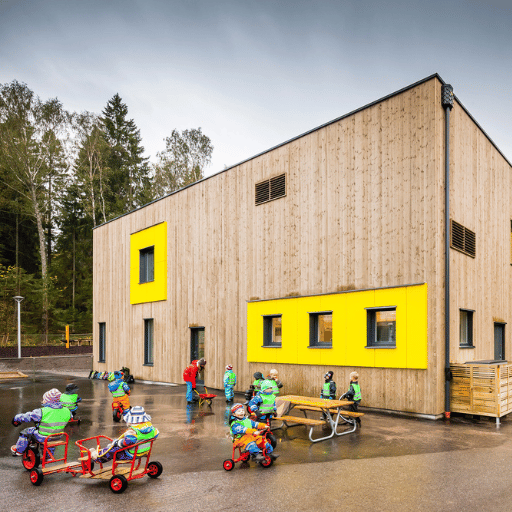Ateljerista Role Interview (Förskola (Preschool))
In this article, we’ve put together all the information you need to run an interview for a Ateljerista in a Förskola (Preschool) in Sweden. We’ve included a Ateljerista job description, job requirements (useful for adding to job advertisements), common job interview questions to ask someone applying for your advertised Ateljerista role, follow-up questions to ask your potential new hire and excellent answers that candidates give to Ateljerista job interview questions. We’ll also look at what happens in an interview for a Ateljerista and the hiring process after the interview.
Ateljerista Role Job Description, Requirements, Questions
Role Job Description:
The role of an Ateljerista in a Förskola (Preschool) in Sweden is to provide artistic and creative experiences for children in a dedicated studio or “ateljé” space within the preschool. The Ateljerista is responsible for planning and implementing art activities that promote children’s creativity, imagination, and self-expression. They collaborate with teachers and other staff members to integrate art into the curriculum and create a stimulating environment that encourages exploration and experimentation.
The Ateljerista is also responsible for maintaining and organizing art materials, ensuring their availability and accessibility to children. They may also be involved in sourcing and purchasing art supplies, as well as managing the budget allocated for the ateljé. Additionally, the Ateljerista may document children’s artwork and experiences, capturing their progress and development over time.
Role Job Requirements:
To excel in the role of an Ateljerista, certain qualifications and skills are necessary. Firstly, a background in art or design is essential, as the Ateljerista needs to have a strong understanding of various artistic techniques and materials. They should also possess a deep appreciation for the creative process and be able to inspire and engage children in artistic activities.
Excellent communication and collaboration skills are crucial for working effectively with teachers, staff, and children. The Ateljerista should be able to effectively communicate their ideas and plans, as well as listen and respond to the needs and interests of the children. Patience, flexibility, and a nurturing attitude are also important qualities, as the Ateljerista will be working with young children who may have varying levels of artistic abilities and interests.
Role Job Interview Questions:
1. Can you describe your background and experience in art or design?
2. How familiar are you with the Reggio Emilia approach and its principles?
3. How would you integrate art into the curriculum and daily activities of the preschool?
4. Can you provide an example of a project or activity you have implemented in the past that encouraged children’s creativity and self-expression?
5. How would you handle a situation where a child is struggling with an art activity or feeling frustrated?
Follow-up Questions:
1. Can you elaborate on your experience working with young children?
2. How would you adapt your art activities to accommodate children with different abilities or interests?
3. How would you involve parents in the artistic experiences of their children?
4. Can you share any strategies you have used to encourage children who may be hesitant or shy about participating in art activities?
Examples of excellent answers from candidates:
1. “I have a Bachelor’s degree in Fine Arts and have been working as a professional artist for the past five years. I have experience in various mediums, including painting, sculpture, and printmaking. I have also worked as an art instructor for children, where I developed age-appropriate art projects that focused on fostering creativity and self-expression.”
2. “I am familiar with the Reggio Emilia approach and its emphasis on the importance of art in early childhood education. I believe that art provides children with a unique way to express themselves and make sense of the world around them. I would integrate art into the curriculum by creating open-ended projects that allow children to explore different materials and techniques at their own pace.”
3. “In the past, I have implemented a project where children created their own imaginary creatures using recycled materials. This project encouraged their creativity and problem-solving skills, as they had to think about the characteristics and features of their creatures. It also promoted sustainability and environmental awareness by reusing materials that would have otherwise been discarded.”
4. “If a child is struggling with an art activity or feeling frustrated, I would first validate their feelings and let them know that it’s okay to find certain tasks challenging. I would then offer support and guidance, breaking down the activity into smaller steps or providing alternative materials. It’s important to create a non-judgmental and supportive environment where children feel comfortable taking risks and making mistakes.”
Ateljerista (Sweden) Interview Schedule
To conduct a comprehensive one-hour interview for a Ateljerista role in a Förskola (Preschool) in Sweden, consider the following schedule:
- Introduction and overview of the role (5 minutes)
- Candidate’s experience and skills assessment (15 minutes)
- Job-specific questions (25 minutes)
- Follow-up questions and clarification (10 minutes)
- Candidate’s questions about the role and organization (5 minutes)
Best Practices for Ateljerista Candidate Communication
After the interview for your Ateljerista role (Sweden), it is crucial to keep the candidate informed about the hiring process. Best practices include:
- Sending a personalized thank-you email to the candidate within 24 hours
- Provide a timeline for the Ateljerista hiring process and when they can expect to hear back
- Regularly updating the candidate on their Ateljerista job application status, even if there are delays
- Offering constructive feedback to unsuccessful candidates to help them improve for future opportunities at your Förskola (Preschool)
- Maintaining open and transparent communication throughout the entire process to ensure a positive candidate experience
Ready to start your hiring process?
Click the button above to get our simple-to-use Applicant Tracking System (ATS) that can be used to manage your hiring process.

